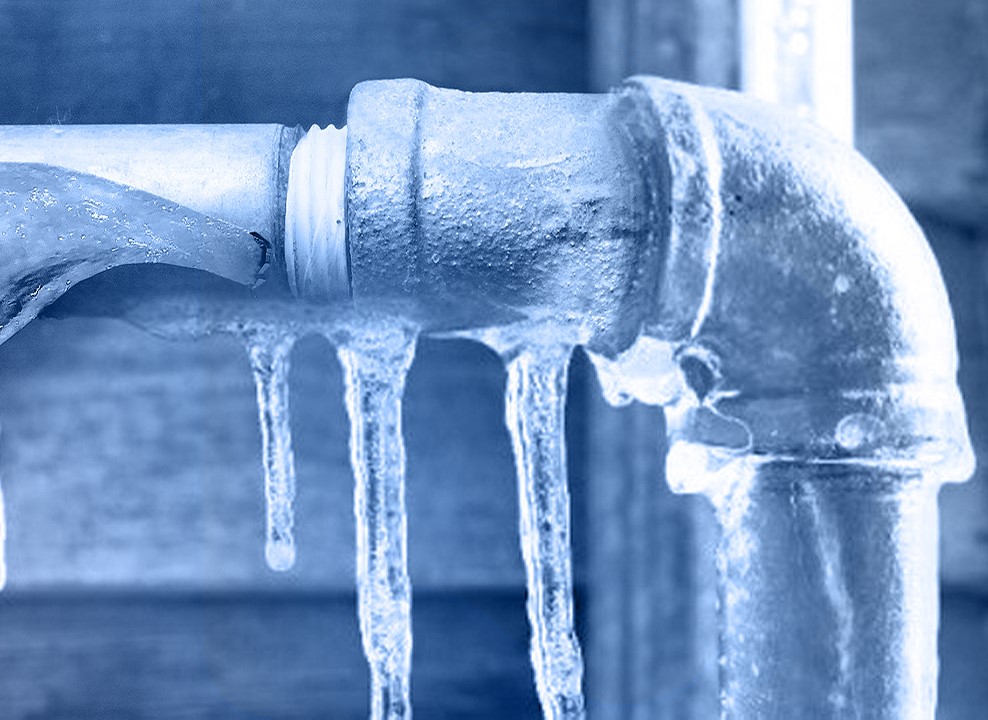Avoiding Frozen Plumbing: Best Methods for Winter
Avoiding Frozen Plumbing: Best Methods for Winter
Blog Article
Listed here in the next paragraphs you can discover more outstanding content in regards to How to prepare your home plumbing for winter weather.

Cold weather can damage your pipes, specifically by freezing pipelines. Below's exactly how to avoid it from happening and what to do if it does.
Introduction
As temperature levels decrease, the risk of frozen pipes rises, possibly bring about costly repairs and water damage. Understanding how to prevent frozen pipes is vital for home owners in chilly environments.
Recognizing Icy Pipes
What causes pipes to freeze?
Pipes freeze when revealed to temperatures below 32 ° F (0 ° C) for expanded periods. As water inside the pipes ices up, it increases, putting pressure on the pipe walls and possibly triggering them to burst.
Risks and damages
Icy pipes can lead to water supply interruptions, property damages, and expensive repairs. Burst pipes can flooding homes and cause extensive structural damages.
Signs of Frozen Piping
Recognizing icy pipes early can prevent them from breaking.
Just how to determine frozen pipelines
Seek decreased water flow from faucets, unusual smells or sounds from pipelines, and visible frost on revealed pipelines.
Prevention Tips
Protecting prone pipelines
Cover pipes in insulation sleeves or utilize heat tape to shield them from freezing temperatures. Concentrate on pipelines in unheated or outside locations of the home.
Heating strategies
Maintain indoor rooms appropriately heated, especially locations with plumbing. Open up cabinet doors to allow warm air to flow around pipes under sinks.
Securing Outside Pipes
Garden hoses and outside taps
Detach and drain garden hose pipes prior to winter. Mount frost-proof spigots or cover outdoor taps with protected caps.
What to Do If Your Pipes Freeze
Immediate activities to take
If you presume icy pipes, maintain faucets available to soothe pressure as the ice thaws. Use a hairdryer or towels soaked in hot water to thaw pipelines slowly.
Long-Term Solutions
Structural changes
Take into consideration rerouting pipes away from exterior wall surfaces or unheated areas. Include added insulation to attic rooms, cellars, and crawl spaces.
Upgrading insulation
Invest in premium insulation for pipes, attic rooms, and wall surfaces. Correct insulation aids preserve regular temperature levels and decreases the danger of frozen pipes.
Final thought
Stopping frozen pipelines needs aggressive measures and fast actions. By comprehending the causes, indications, and safety nets, home owners can safeguard their plumbing during winter.
6 Proven Ways to Prevent Frozen Pipes and Protect Your Home
Disconnect and Drain Garden Hoses
Before winter arrives, start by disconnecting your garden hoses and draining any remaining water. Close the shut-off valves that supply outdoor hose bibs and leave the outdoor faucet open to allow any residual water to drain. For extra protection, consider using faucet covers throughout the colder months. It’s also important to drain water from any sprinkler supply lines following the manufacturer’s directions.
Insulate Exposed Pipes
Insulating your pipes is an effective way to prevent freezing. Pipe insulation is readily available at home improvement stores and is relatively inexpensive. Pay close attention to pipes in unheated areas such as the attic, basement, crawl spaces, or garage. Apply foam insulation generously to create a buffer against the cold. You can also wrap your pipes in heat tape or thermostat-controlled heat cables for added warmth.
Seal Air Leaks
Inspect your home for any cracks or openings that could let in cold air. Seal any holes around the piping in interior or exterior walls, as well as the sill plates where your home rests on its foundation. Additionally, make sure to keep your garage door closed unless you’re entering or exiting. Leaving it open creates a significant air leak that can lead to frozen pipes.
Allow Warm Air Circulation
During cold snaps, it’s essential to allow warm air to circulate evenly throughout your home. Leave interior doors ajar to promote better airflow. Open kitchen and bathroom cabinets to help distribute heat consistently around the rooms. If you have small children or pets, be sure to remove any household chemicals or potentially harmful cleaners from open cabinets for safety.
Let Faucets Drip
A small trickle of water can make a big difference in preventing ice formation inside your pipes. When temperatures drop significantly, start a drip of water from all faucets served by exposed pipes. This continuous flow helps prevent the water from freezing. Additionally, running a few faucets slightly can relieve pressure inside the pipes, reducing the chances of a rupture if the water inside does freeze.
https://choateshvac.com/6-proven-ways-to-prevent-frozen-pipes-and-protect-your-home/

Do you enjoy more info about How to Prevent Your Pipes From Freezing? Leave a remark directly below. We will be pleased to hear your reactions about this blog posting. Hoping that you come back again in the future. Appreciated our entry? Please quickly share it. Help somebody else find it. Many thanks for your time. Kindly check up our website back soon.
Booking Page Report this page